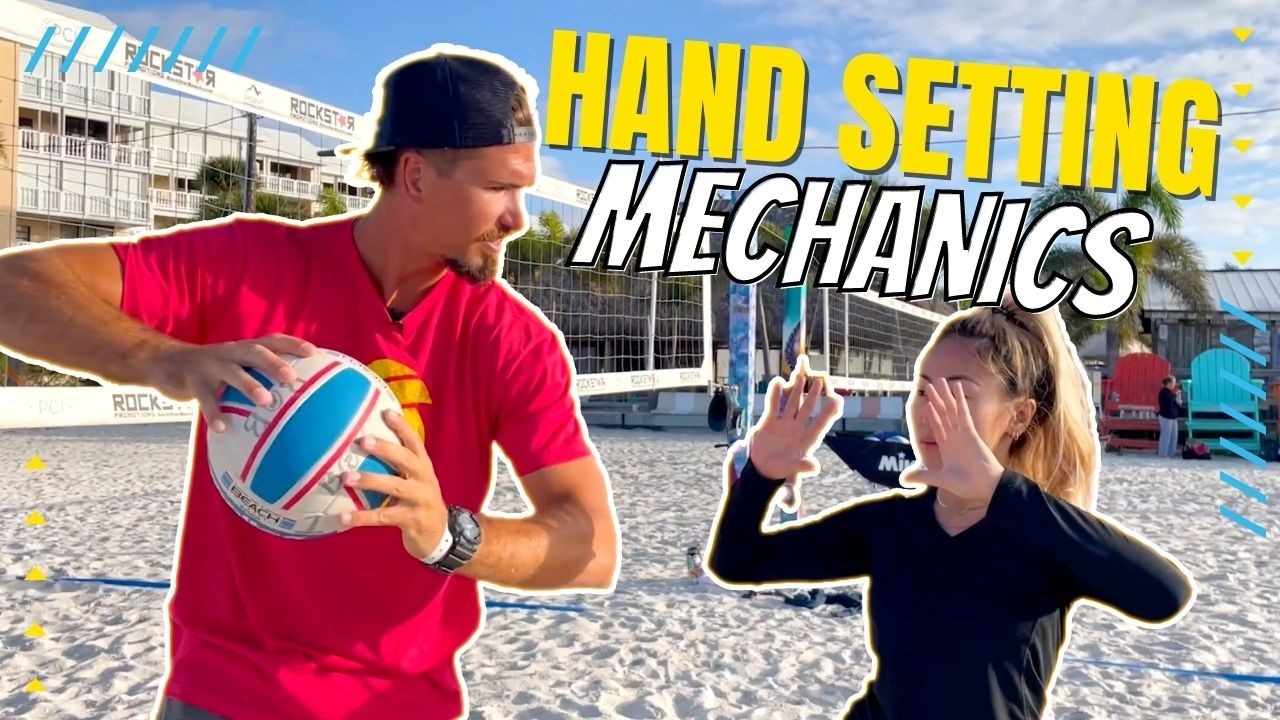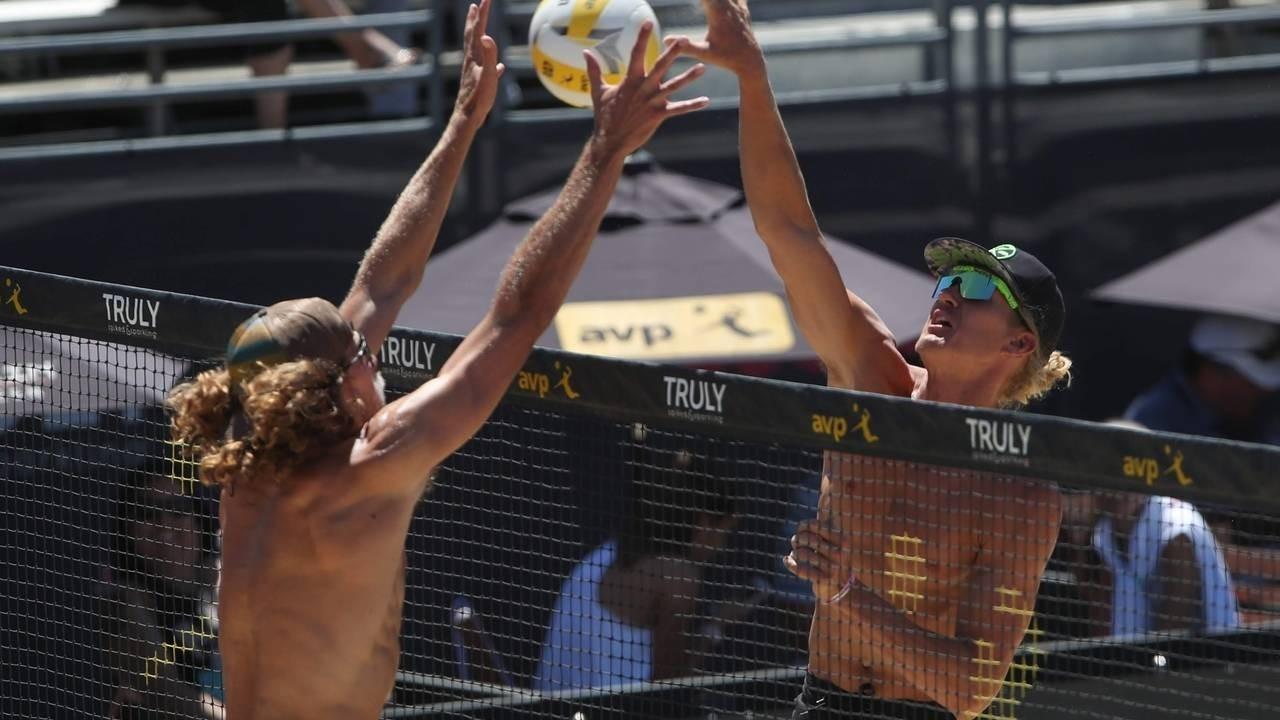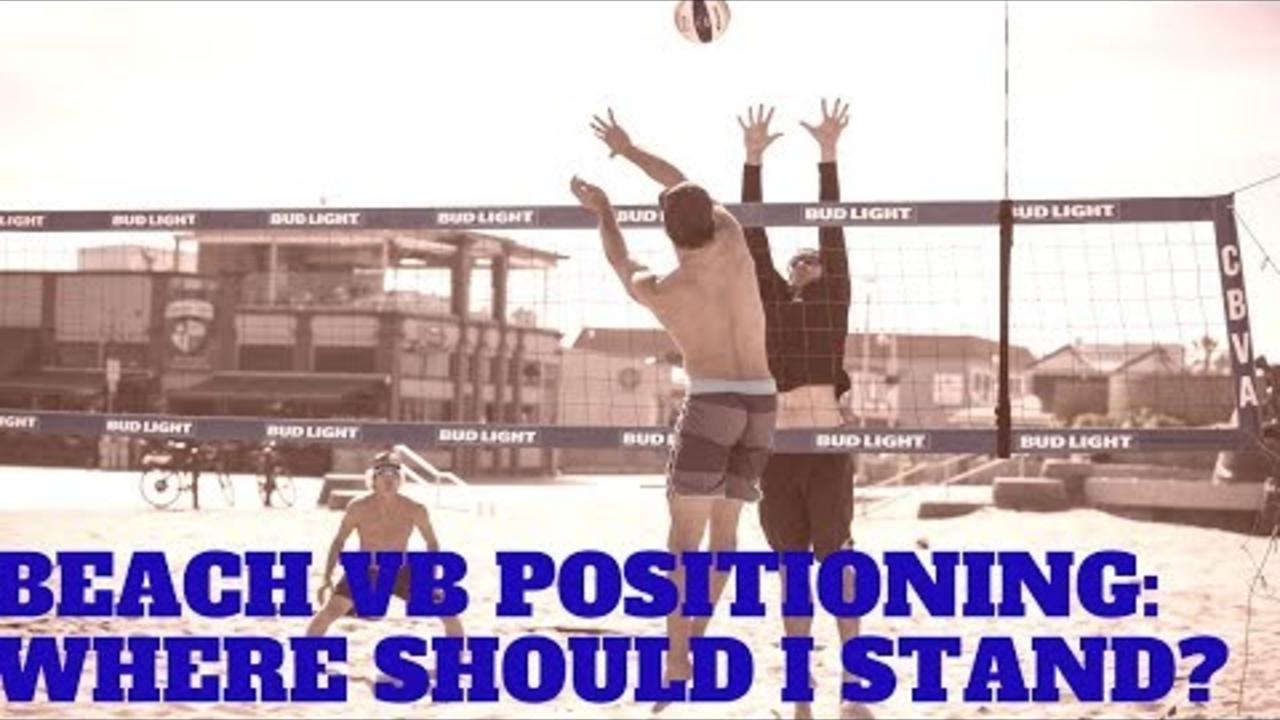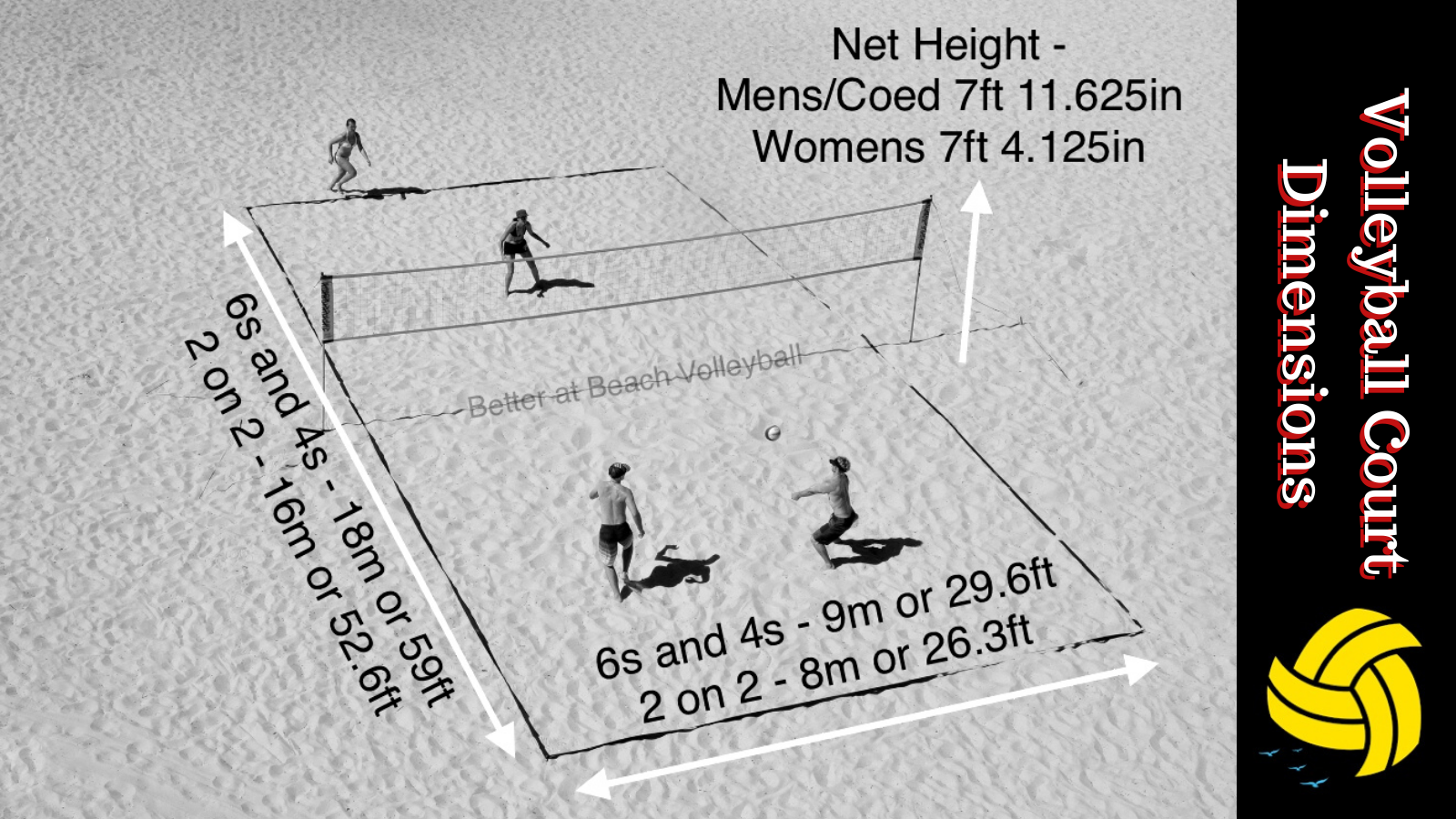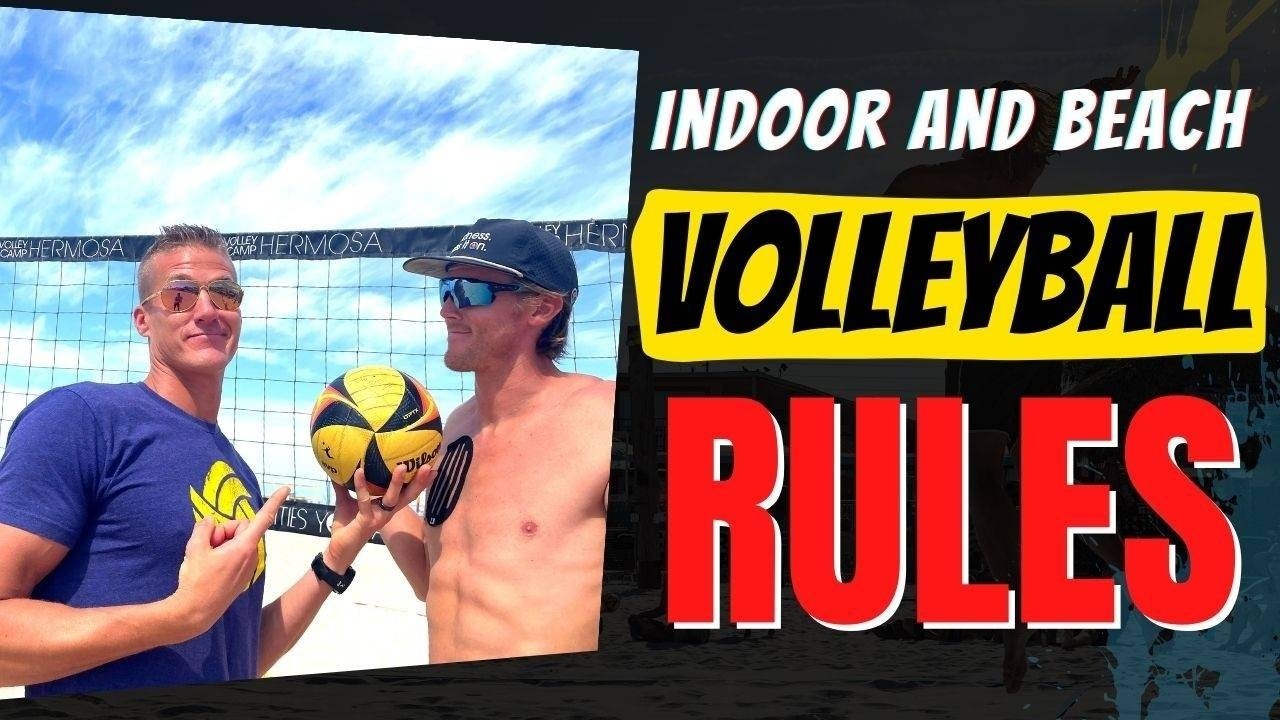
Everything you NEED to know about Volleyball and Volleyball Rules
Indoor and Beach Volleyball Rules
“Why so angry? It’s just the rules, man.” Ever had this conversation on the volleyball court? Nothing can get heated more than an argument on the court about rules. To make sure you do not experience this, we have compiled a condensed version of volleyball rules.
Time to Dive In...
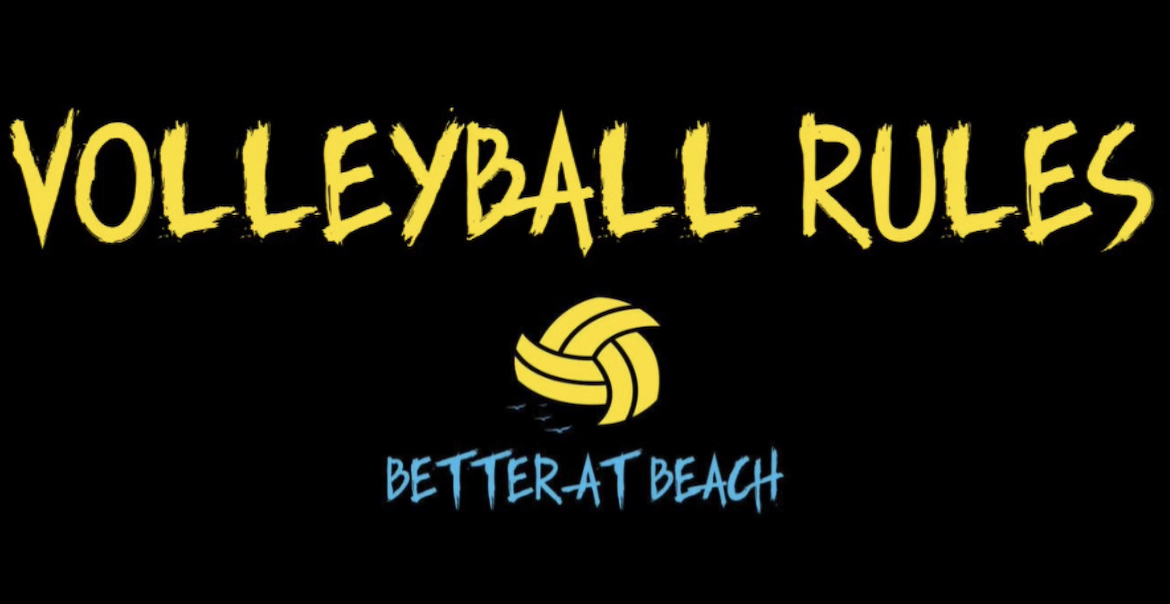
I GET ALL THE TOUCHES I NEED, RIGHT?
There is a maximum of three touches in volleyball and you want to get all three touches. You want to get one pass that controls the ball for your team, then your setter is designed to set the third touch up for a jump and a spike.
Who is the setter? In indoor volleyball, you have a designated setter, but in beach volleyball everyone is a setter because there are only two people. If you are playing with a few people that are sending the ball back and forth with one or two touches, you are not going to be effective. You should always encourage the team, especially beginners, to utilize all three touches every single time.
THAT WAS A TOUCH!
So, when is a block a touch? In indoor volleyball, the other team spikes the ball and you are up in the net trying to block it and the ball touches the blocker(s), and then it continues into their court, their team now has three touches to play the ball. If you blocked the ball, you can go and play that first touch, which is really the only situation where you can play two touches in a row. In beach volleyball, where you have 2 on 2, if the blocker touches the ball, that actually counts as the team’s first touch. So, the defender or the blocker can then pursue that ball and the third or final touch must go over the net.
Wait, so what about that first touch? To pass the ball and set up the play, I can use open hands, right?
There is a difference with what is allowed in beach and indoor volleyball. When playing indoor volleyball or 6 on 6, you want to take most of the serve-receive with your platform, but you can also receive your first touch with an overhand pass. However, beach volleyball has very strict rules with receiving the ball with your hands. So, the number one thing we recommend is during every single serve-receive, you do NOT use your hands. You use your forearm pass or your bump. It is very important in getting to the next level in beach volleyball. If the serve does come high and fast, you can use a “tomahawk” where you take your platform and turn it upside down and use the “karate chop” parts of your hands to receive. Do NOT slap the ball overhand for your first touch. Keep scrolling to learn how to create your perfect platform.
Watch Mark and Brandon explain volleyball rules and get ready for your next league or tournament
ON YOUR MARK…SET!
What does a set contact look like? When a lot of players are learning, they slap the ball forward with their fingers or hit the ball really solid. The type of rebound that you are looking for out of a set is similar to how a basketball is dribbled. You need that same soft receive and then out, but it is not the top of your fingers. Instead, create a diamond or cheeseburger shape with your hands where the ball will come into your hands and your wrists will rotate back and then push the ball forward and out.
Want to elevate your setting skills and know what NOT to do?
Click on this video to watch Mark and Brandon explain the
Seven Deadly Sins of Hand Setting
as well as this amazing blog
Mechanics That You Absolutely NEED to Know In Order to Master Hand Setting!
BUMP, SET, SPIKE!!!
Everyone loves spiking, especially Brandon. So, the best way to convert your spikes into points is to have the right approach and skill.
This blog will touch on the very basics of spiking, but if you want to be on a whole “notha'' level, find your way to the best information about spiking right here .
How to Spike a Volleyball - A Step by Step Explanation of Hitting Technique (With Videos)
When you are setting yourself up for a spike you should be far from the net. You should NOT wait at the net for a spike because your hitting window will be small and it will be more difficult to set you. We recommend that when you start waiting for a spike and you are ready to hit, you should be behind half court, then call for that set on the net. When you jump, you are going to pull yourself to a bow and arrow position and you will jump and hit the ball up high using the center of your palm. Again, when we talked about tipping, do not use your fingertips to spike a ball, especially not in beach volleyball. You can always tip for indoor volleyball or 6 on 6, just not in beach volleyball.
What a Rally! Who gets the point?
One of the common questions in volleyball is about who wins the point after the rally has finished? A long time ago, you used to have to be serving to score a point. That is what we call SIDE-OUT SCORING. Those times have evolved and we have moved to the RALLY SCORING era in volleyball. While there are still a select few, specifically old school, tournaments that run with the side-out scoring, every other volleyball league and tournament, you receive a point when you are receiving or serving. Every time a play ends, somebody is awarded a point.
YOU, NET NUDGER!
Is the serve allowed to touch the net and then go over? YES! This is another one of those old rules that we don’t play by anymore. Back in the day, you had to serve and make sure that it cleared the net. If it hit the net, it didn’t count. Nowadays, when playing beach volleyball or indoor volleyball, when you serve and the ball hits the net then goes onto the other side, the play is live and it continues. It is counted as a good serve. The only caveat that we are currently going through in 2022, is the AVP has a freeze point, which means on match point they go back to a let serve system. If the ball touches the net and goes over on match point, it is a let or redo, and you have one more chance to get the ball to go clean over the net. They’ve instituted this rule just to see if they could make the end of the matches more exciting because nobody wants to see an ace on the last point.
Want to show your support and help us make more content?
Click on one of these awesome volleyball accessories
SERVE IT UP!
Does it matter where I serve from? Short answer, no.
Years ago, in indoor volleyball, you had to serve from the back right side of the court, but they have gotten rid of that, in recent times. So, as long as you are behind the service line or baseline, you can serve over the net. You cannot be outside the sidelines. If you step on or outside the sideline, that is an illegal serve. You must be in between the sidelines and behind the service line. If you step on the line, and then make contact, that is an illegal serve. You can serve, jump, and land inside the court as long as you contact the serve before you land in the playing area. You can serve from anywhere, right, middle, or left and keep the ball in between the two antennas on the nets representing the sidelines. If the serve goes directly over the top of the antenna, and then lands in the court, it is ILLEGAL because it passed over the out of bounds marker. Antennas are actually infinite out of bounds lines and the ball cannot cross over them.
DOES IT MATTER WHAT BODY PART I USE?
NO, you can use anything. Just so we are clear, though, you cannot use your feet to serve the ball. You are supposed to serve with one arm, but if you are in the middle of a point and you happen to pass it or set it, you are allowed to use any body part you want. That includes your feet or your head.
Want to show your support and help us make more content?
Buy one of these cool beach volleyball gears...
 |
 |
|---|---|
|
|
Ueasy Vertical Jumping Trainer Jump Resistance Bands System Horizontal Leaping Fitness |
AM I ALLOWED TO TIP IT, CATCH IT, OR THROW IT LIKE A BASKETBALL?
In indoor, kind of. In beach volleyball, no.
First, let’s talk about the pass when we are not attacking. You do not want to leave your hands open and try to grab the ball or scoop it up with your fingers. It should bounce off of your platform or, if you do use an open hand, it should BOUNCE. Whether you are playing indoor volleyball or beach, a touch off your platform or bounce off your palms is okay. Once you get your fingers involved, that is not allowed. Do not scoop and grab with your fingers. Leave them open so it can POP off.
WHAT'S A PLATFORM LOOK LIKE?
We recommend building your platform with fingers perpendicular, thumbs parallel, and use your forearms to touch the ball.
When you are attacking or sending the ball over the net, indoor volleyball allows setting or “throwing” the ball over the net. Then it is okay to use finger action. Beach volleyball is different. You cannot set the ball over the net unless you are facing exactly where you are sending the ball. Accidents permitted.
If you are attacking the ball in indoor volleyball, you can tip or dunk the ball. The key is to not bring it from behind your head and hold it, then windmill it. It should be a tip, not a grab and a throw. That is very important. With beach volleyball, you cannot do that when attacking. For 2 on 2, women’s beach volleyball and men’s beach volleyball, you have to hit it with a solid bounce contact or a pokey. You cannot control the ball with your fingertips.
POINT!
How many points are in a game of volleyball? This is another place where indoor and beach volleyball have a wide contrast. When you are playing indoor volleyball, you play the best of five sets to twenty-five points and you must win by two. Caveat is if you go to a fifth and final set, that is played to fifteen. Again, all sets must win by two and the first team to get three sets wins the match. For indoor volleyball, you switch sides of the net at the end of every set.
Beach volleyball consists of playing to the best of three sets. Those sets are twenty one for the first two sets and fifteen, if it goes to the third and final set. You have to win by two in order to close out the set and win the match. Changing sides is different because there is wind, sun, and sometimes, an ocean. So, beach volleyball requires you to switch sides of the net every seven points as well as at the end of each completed set. If you go to a third and deciding set, you switch sides every five points since you are playing to fifteen. This is to help balance out the elements of being outdoors.
SERVE OR SIDE?!
At the beginning of the match, the sides, who serves and who serve-receives is usually decided by a coin flip, if it is an official match. In other leagues or tournaments, it can be decided by rock-paper-scissors, or our favorite, hunter-princess-bear. The winner gets to choose if they want to receive the first ball, serve the first ball, or choose which side they are going to start on. When you win the coin flip, you choose if you want to start on a certain side or if you want to serve/serve receive.
MAY THE ODDS BE EVER IN YOUR FAVOR?
“WAIT, I THOUGHT I WAS SERVING NEXT?”
I know we have all heard that, a time or two. There is a rotation that has to be followed. When you are playing indoor volleyball or 6 on 6, there are usually three front row players and three back row players. If you are a front row player, it means that you can jump, block, and hit close to the net. If you are a back row player, then there is a three meter or ten foot line where you must jump from behind. It is okay if you land in front of that line after attacking. You just have to come from behind it if you want to spike.
Now, for 6 on 6 beach volleyball, there really is no ten foot line. If you are playing, you can pretty much hit from anywhere. We just like to have our front row hitters spike on the net and the back row players play defense and pass. As far as rotations go, for indoor, you are going to rotate clockwise in a circle and the person that ends up in the back right of the court, also called Zone 1, is due to serve. You rotate into that one spot and then that person serves.
Knowing this, most players on advanced teams do not stay in those positions. After the serve, everyone goes to the position that they play in. There is usually a setter, middle blocker, an outside hitter, and a right side hitter, or opposite. Some teams can have a libero, which is a defensive specialist.
Show up to the courts in style wearing one of these bad boys and you are bound to intimidate your competition.
When you are playing beach volleyball, any time your team receives the serve and wins the point, you have to switch servers. So, if you are serving and win that point, you do not switch servers. You will continue serving until the other team scores the point. At this time, they will take the serve and their next server will serve the ball to you. When you get the ball back, this is when your next server is played in the rotation. You are always alternating servers.
In beach volleyball, you usually have someone that specializes on the right side, left side as well as you have one specific blocker, who protects the net on defense, and one specific defender. Both players in beach volleyball are spikers, passers, and setters. That is very different from indoor volleyball where there are very clear positions.
If you want to learn more about beach volleyball specific positions and what attributes and responsibilities you have, check out our previous video where we go further into detail.
Volleyball Positions! What side SHOULD you play?
THAT TOUCHED THE LINE!
For both indoor and beach volleyball, if the ball lands on the line, the ball is ruled in and the point awarded to the appropriate team. "I saw the line move!" Looks can be deceiving. In beach volleyball, sometimes there is sand splash that makes the line wiggle or move. You, then, have to determine, did the ball land on the line or hit the line on its landing? If the lines move during the point, and the ball lands somewhere around where that line started then the referee and the players, after the point, can reset the lines to where they started. If the ball would have landed inside the court or on the line, then it is ruled good. Always remember to check the lines when the play starts. Wherever the lines start during that point, that is where the boundaries are. If they get kicked and moved throughout the point, at the end, you are allowed to reset the lines into their original location to determine if a ball was in or out.
DON'T TOUCH THE NET.
You are not allowed to touch the net while in the action of playing the ball. What does that mean? That means if you are trying to block somebody and touch the net, you are trying to play the ball and stop them. So, if you touch the net, it is illegal and it is the other team’s point. "But, I didn't mean to touch the net!" If you are spiking and accidentally hit the net, it is still illegal. If you are randomly hanging out and accidentally brush the net, that is okay but don’t mess with it. You don’t want to give the refs a reason to make you lose the point.
Key point - DO NOT TOUCH THE NET. You will lose a point.
VOLLEYBALL COURTS AND NET HEIGHTS
Straight facts. Indoor volleyball courts are 9m by 9m and beach volleyball courts are 8m by 8m. The net heights are 7’ 11 ⅝” for men’s beach volleyball, and 7’ 4 ⅛” for women’s beach volleyball. We talk about volleyball courts, dimensions, net heights and how to build your own court in this previous BLOG and VIDEO.
Learning volleyball is really fun and we are excited to share our knowledge with you. We are giving you all the information you need to know in order to learn and play the sport of beach volleyball at a higher level.
If you are looking to elevate your game, you can host one of our weekend volleyball clinics or attend one of our camps by clicking on the links below.
🔥 💪 🏐 BEACH VOLLEYBALL VACATIONS AND TRAINING CAMPS 🔥 💪 🏐
🔥 💪 🏐 GET SOME VOLLEYBALL SWAG & SUPPORT OUR CHANNEL 🔥 💪 🏐
🔥 💪 🏐 WANT TO ORGANIZE A CLINIC IN YOUR HOMETOWN?!?! 🔥 💪 🏐
Email us: [email protected]
***
Want 36 of our favorite drills that you can use on your own, with a partner, or with a team, we have included those below.
Join our email list and Get your FREE Drill Book > www.betteratbeach.com/freebeachvolleyballdrillbook
We are going to help you pass with more accuracy, more consistency and more confidence! Get the positioning and the mechanics to control the first touch against any server, in any weather. You’ll also learn to develop a mindset that keeps you in the game so you can stay focused and win matches.
All you have to do is sign up for our Beach Volleyball Mastery. We take you through the basics and then work all the way up to eye-work and advanced mechanics so you pass every ball right where it needs to go!
We’ll show you how to pass for option (on-2) attack, how to fight off great float serves and how to pass for YOUR best offense.
Once inside the membership, you’ll be able to unlock “Pass with Consistency and Confidence: The Serve Receive Master Class” which will build your footwork and passing platform from the ground up. It comes complete with footwork drills, solo drills, partner exercises and passing charts so you can measure your progress!
We also include with 9 more skill courses AND our
60 Day At-Home Max Vertical Jump Training Program.
Once you sign up, you'll be able to watch the in-depth tutorials, film your “before” videos, start and film your at-home drills and begin posting to our Private Facebook Group. Then, our coaches will break down your mechanics, footwork and touch at our weekly online meetings. Yes, that means we look at YOUR videos and we coach YOU!
Facebook Group CTA VolleyChat! Get Better at Beach Volleyball for posts about common questions/ problems > FACEBOOK GROUP CTA VOLLEYCHAT!
SIGN UP NOW AND LEARN HOW TO WIN FROM THE PROS.

